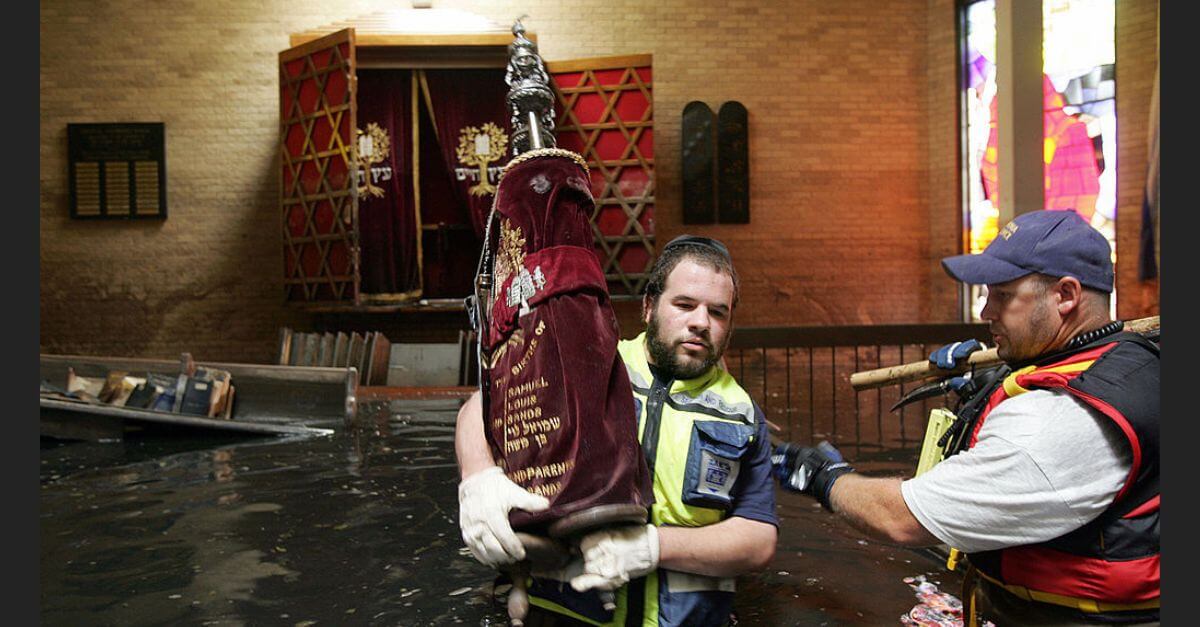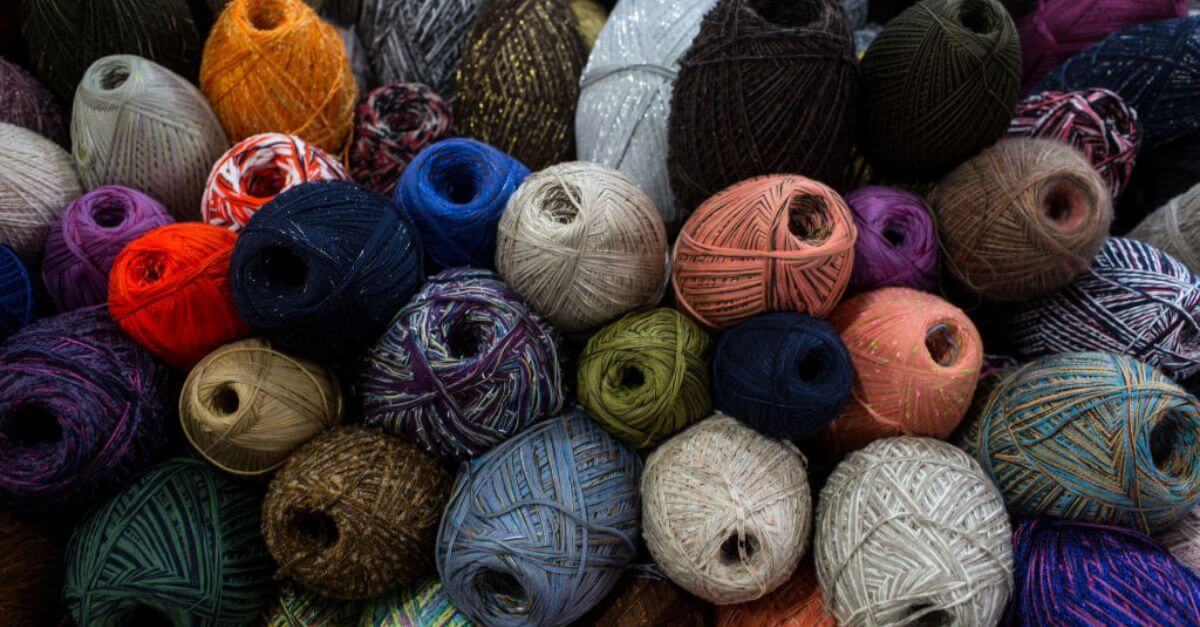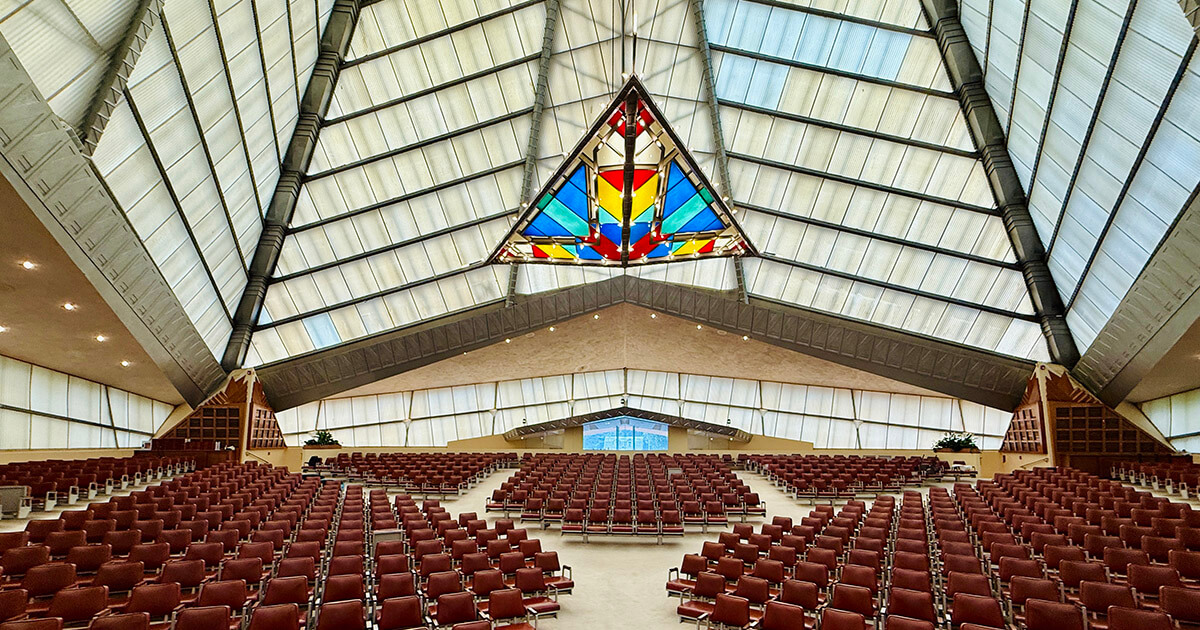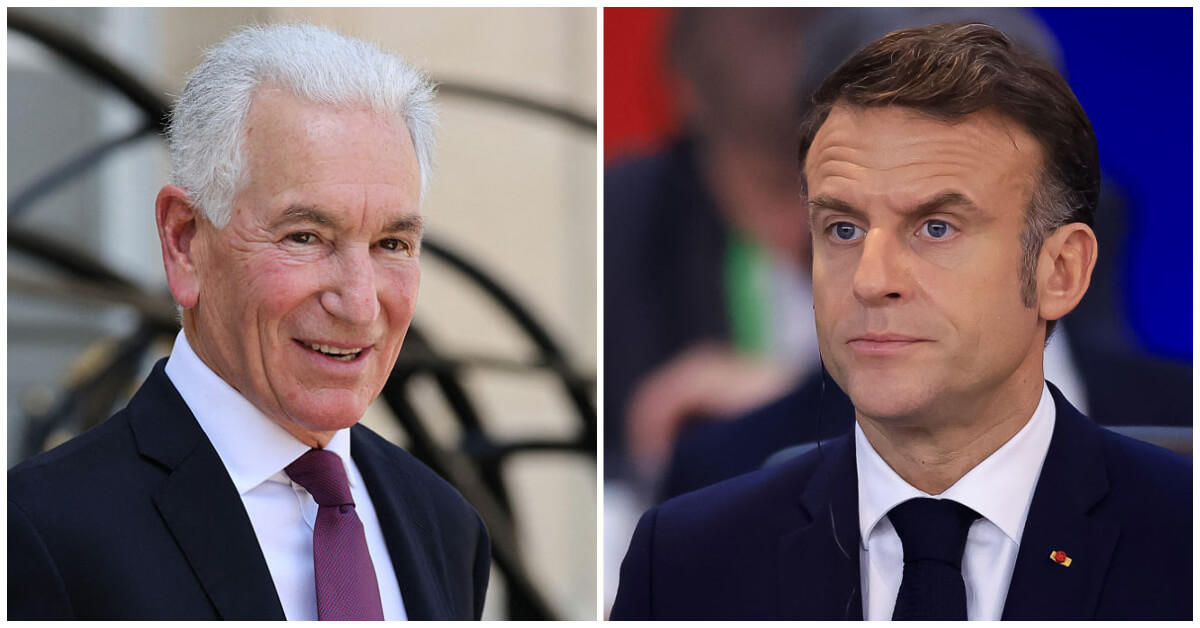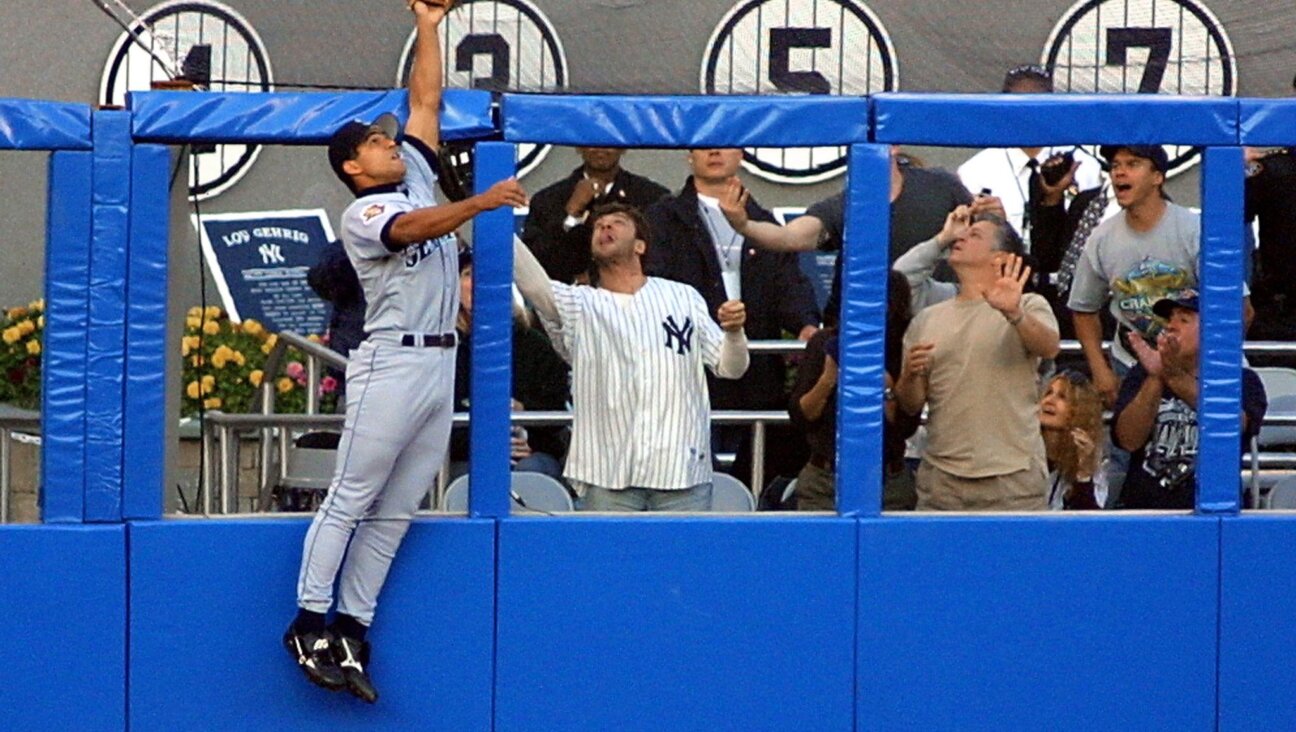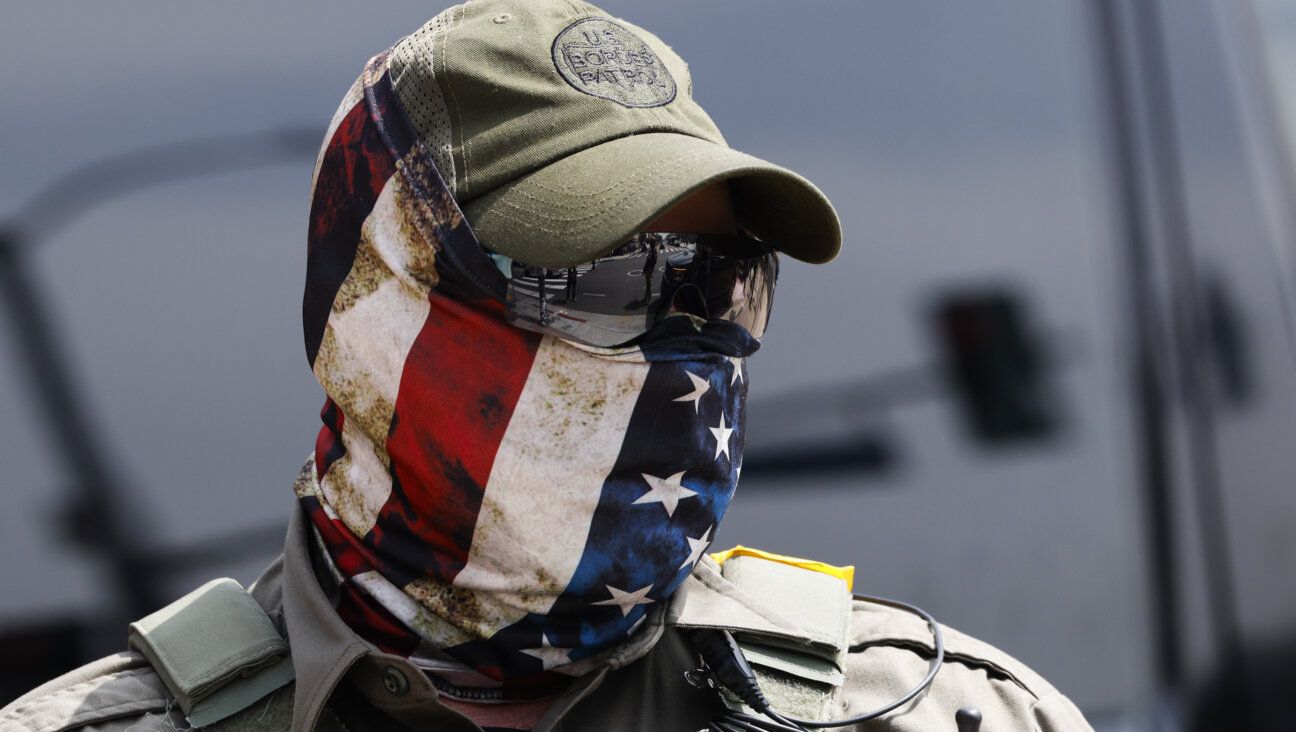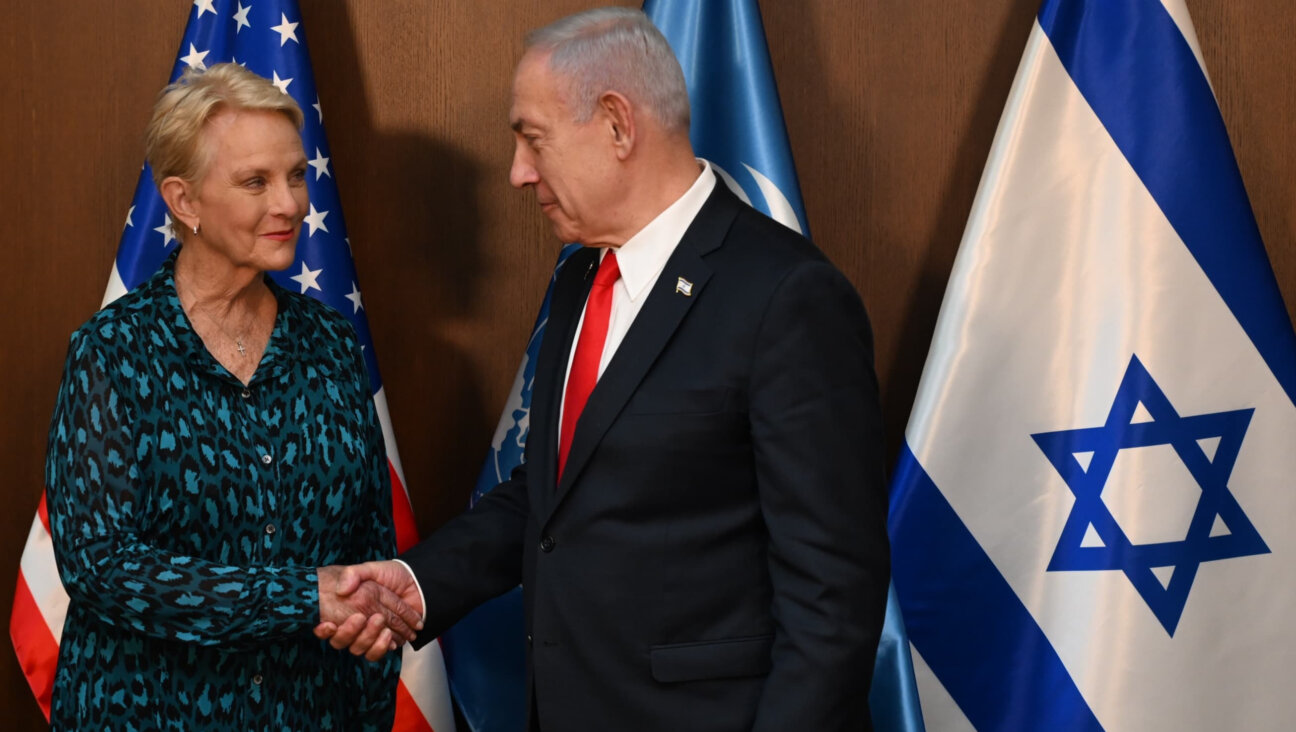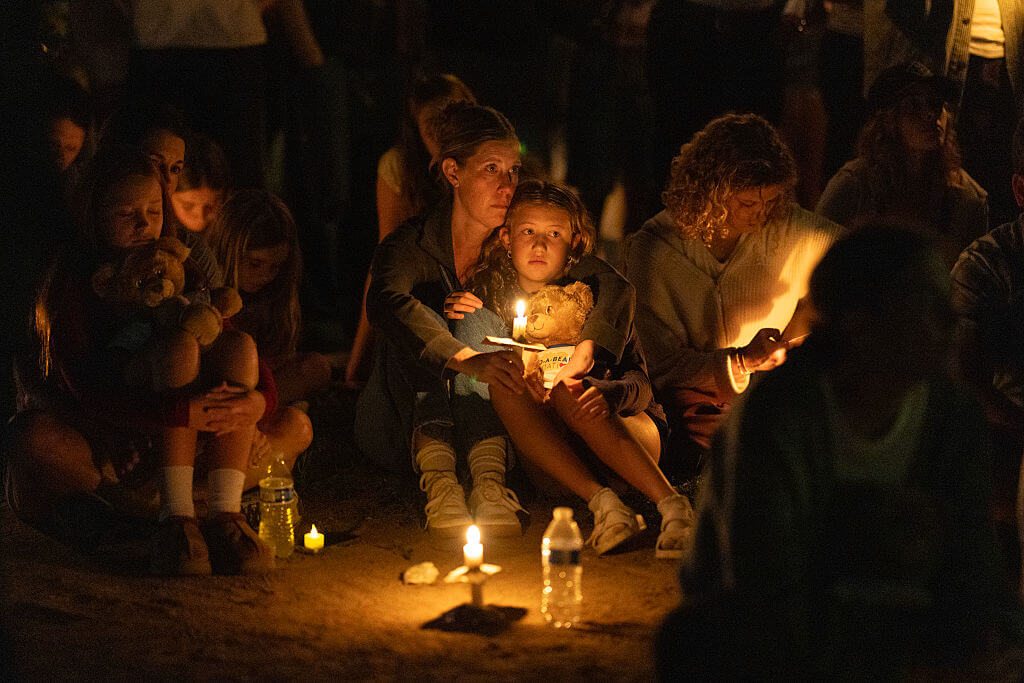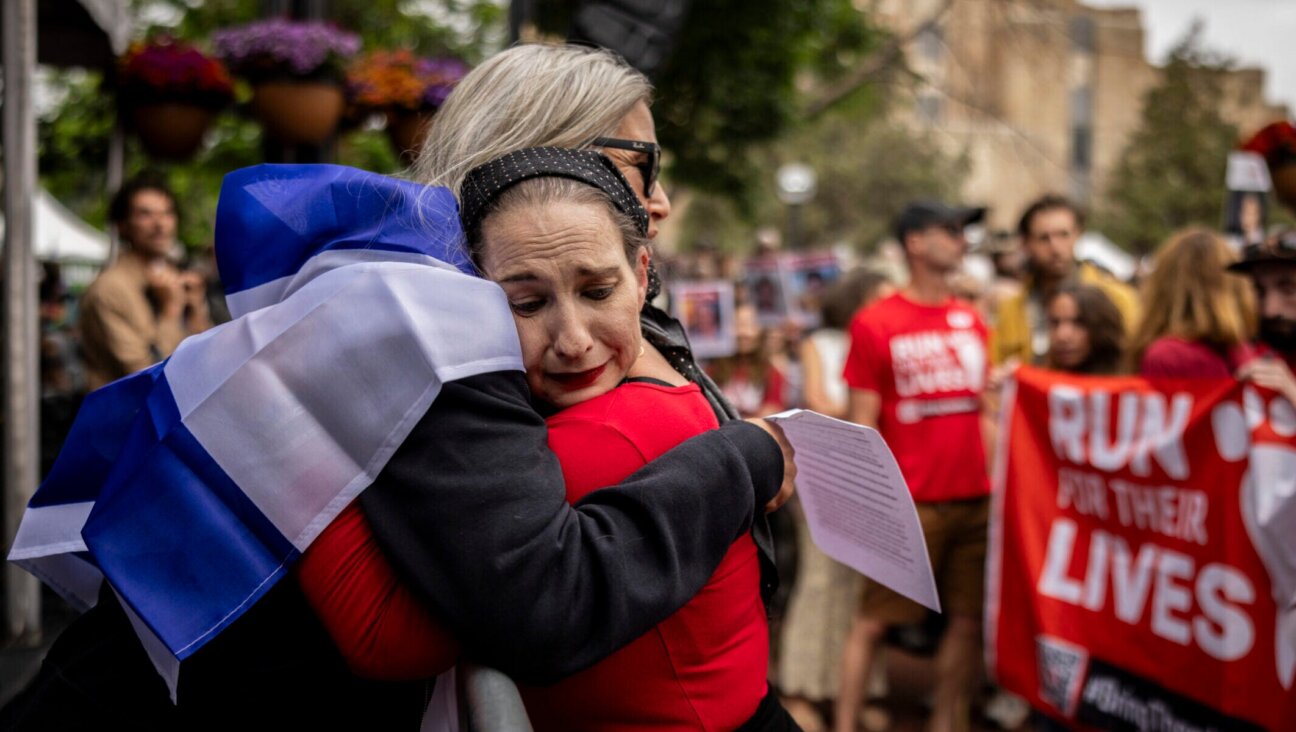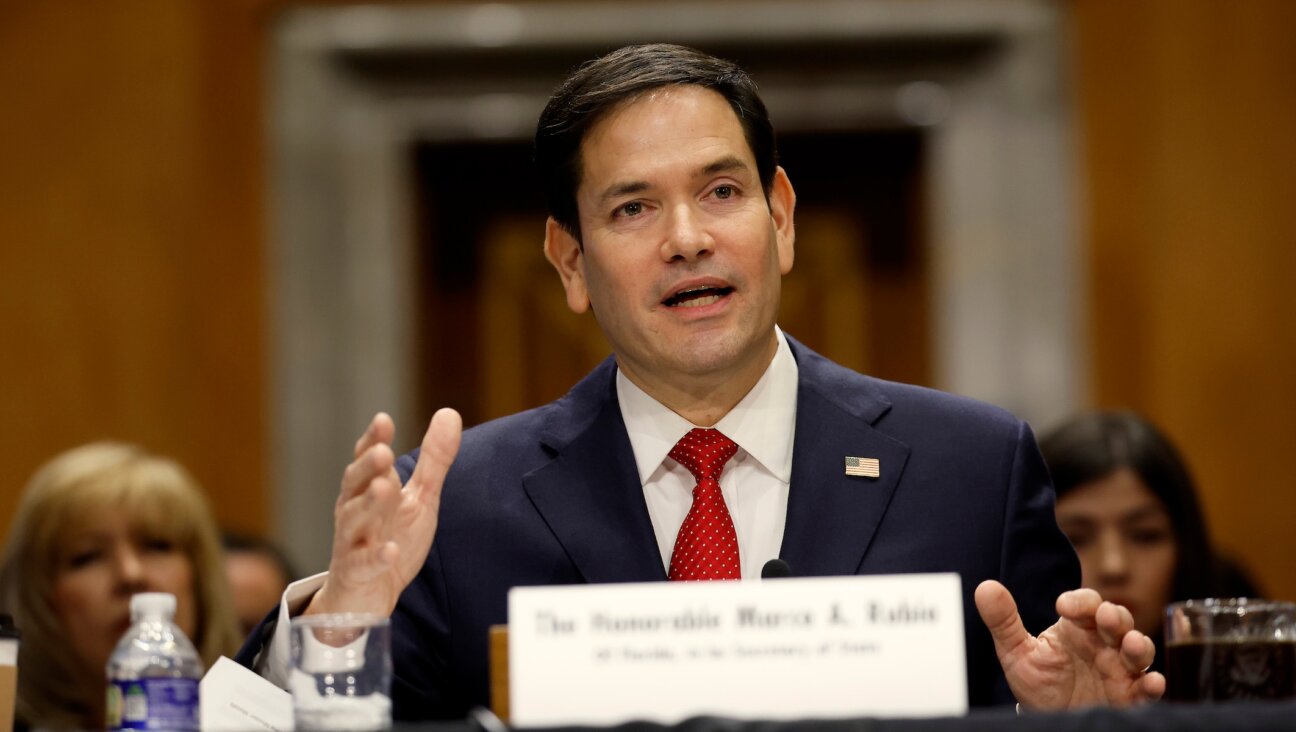Jayson Littman, ‘Mayor’ of Gay Jewish Party Scene, Was Once Yeshiva Boy

Graphic by Angelie Zaslavsky
“You’re now a gay American Jew? Are you a Jewish American gay? Are you an American gay Jew?” Jayson Littman pondered his multiple identities. Is it possible to be all three simultaneously?
For Littman, it’s a rhetorical question. The 35-year-old financial consultant hosts parties in New York City, where the scene is decidedly gay and Jewish.
Littman created his events group, He’bro, in 2007 after he realized that there were few social outlets for gay Jews. There were Jewish organizations for lesbian, gay, bisexual and transgender individuals that offered spiritual experiences, but he felt that secular gay Jews needed and wanted to meet each other in nonreligious settings. His first party, a “Jewfest” at the Vlada Lounge, in Hell’s Kitchen, was meant to be a small affair with some 30 people, but word spread through Facebook and 250 people showed up.
Today, the parties — which are funded through door admission at Manhattan clubs — can easily attract hundreds, sometimes more than 1,000 people, and last until the early hours of the morning. The events are loosely themed to Jewish holidays: Sederlicious occurs just before Passover; High Homodays marks Rosh Hashanah and Yom Kippur, and Jewbilee is on Christmas Eve. Each party brims with Jewish inside jokes. There’s a dry erase board at High Homodays, tagged with the phrase “I Repent,” on which guests can write down their sins. At one Jewbilee there was a “Man-orah” of male dancers. Most guests are secular Jews who consider the parties a rare outlet for their religious identities, Littman said. But some Orthodox Jews come, as well.
“We’re not doing gay work in the Jewish community,” Littman said. “We’re doing Jewish work in the gay community.”
He’bro has gained a rapid following. Littman’s parties are known not only across the country — people come from as far away as California, not to mention cities close by, like Washington, D.C., Philadelphia, and Boston — but also in Israel, where He’bro has admirers in Tel Aviv’s dynamic gay social scene. (Littman also helps contribute to that scene by leading gay Jewish Birthright trips.)
“If you’re a young, gay Jew moving to New York and you’re looking to get into the scene, Jayson Littman is the one to know,” said Micah Jesse, a 26-year-old entertainment writer. For gay Jews, Jesse said, He’bro is like “the gay bar mitzvah we never got to have.”
Littman and He’bro have occasionally come under fire for taking Judaism too lightly, for marking religious holidays with raucous parties.
“My hope is that He’bro can be a gateway drug,” said Jay Michaelson, founder of the LGBT Jewish group Nehirim (and a Forward contributing editor). “Hopefully, some percentage of the Jews and bagel chasers [non-Jewish men who are interested in Jews] who come to He’bro will take a further step on their journeys, maybe checking out some Jewish learning, or getting involved politically, or visiting Nehirim or one of the other LGBT Jewish organizations that offer more substantive forms of engagement.”
Littman, for his part, doesn’t see his parties as a substitute for an active practice, but more as an opportunity to acknowledge Jewish identity in the world of gay socializing.
Before Littman became the “king of New York’s gay Jewish nightlife” as a 2012 Times of Israel story called him, he was a young yeshiva student trying to find his own path. He grew up in a Washington Heights congregation called K’hal Adath Jeshurun, made up of Orthodox German Ashkenazi Jews.
In his early 20s, Littman realized he was having feelings for other men. Desperate to hold on to the community he had grown up with and to raise a family, at 21 he voluntarily entered the JONAH (originally Jews Offering New Alternatives for Homosexuality, now called Jews Offering New Alternatives for Healing) reparative therapy program in Jersey City, N.J. He hoped it would rid him of his attractions. In a 2011 Huffington Post article, Littman wrote, “…it wasn’t a choice between coming out and conversion therapy; rather, it was a choice between conversion therapy and not wanting to live anymore.”
After five years of therapy, he moved into the Westmont apartment complex on the Upper West Side, known for its straight Orthodox singles scene. He wanted to date women, find a wife, have a family. But deep down inside, Littman knew the therapy didn’t work. Unbeknown to his roommates at the Westmont, he began exploring the gay community, get- ting involved with gay Jewish groups like Jewish Queer Youth, an LGBT group for Orthodox Jews.
In June 2007, Littman went on a gay cruise on the Queen Mary 2 to Southampton, England, from New York. It was an environment that was, he said, “100% gay all the time.” He kept kosher on the cruise, and put on tefillin in his room. For the first time, he was comfortable as an openly gay religious Jew; it was a turning point.
Yet as he began living an active life in the gay community in New York City, his Jewish identity took a back seat. In February 2008 he stopped wearing tefillin. On that day, he literally marked his departure from Orthodox Judaism with a tattoo on the spot on his arm where he used to wrap the black straps. His tattoo artist, an Israeli named Yoni Zilber, inked “besiyata dishmaya” in Aramaic. Littman was required to write that notation, which means “with the help of heavens,” on every paper he turned in at yeshiva.
“You’re Jewish, you’re not allowed to have a tattoo,” people would tell him.
“Well, I’m not allowed to be gay, either,” he’d respond.
Today, Littman said, “I feel like I freelance in Orthodox Judaism.” He keeps kosher and observes the Sabbath, alternating his attendance at Orthodox and gay synagogues. He spends the holidays with his parents or with his siblings and their children, who, he said, have come to accept him.
‘It’s a way to celebrate,” Brian Delshad said of Jewbilee, He’bro’s Christmas Eve celebration. “It’s a night where typically we have nowhere to go. As Jayson says, forget ordering the Chinese food tonight, just come out to this!”
Delshad, 27, works in real estate development and was raised in the Conservative tradition. His parents used to warn him against showing his Judaism too strongly, for fear of the social consequences they experienced being Persian Jews in a largely Muslim culture. For Delshad, hiding his Jewish identity was akin to hiding the fact that he was gay, which he did until he came out at age 19. “Now it’s like, oh wait, both these two things — I mean, maybe it’s because we’re in New York City, I don’t know — but they’re both turning out to be pluses. There’s community involved behind being Jewish, there’s community involved behind being gay… it’s seen as a good thing. I feel very lucky in my adult life to have experienced that,” he said. “I constantly will come across guys who are like: ‘Oh, my God, you’re Jewish. That’s awesome. You guys make good husbands.’” Delshad laughingly calls these men “bagel chasers,” a term coined by Littman.
Like Littman, Delshad found that coming out pushed his Jewish identity to the background for a while. After he came out, he focused on forming an identity and on finding a place in New York City’s gay community. “If I didn’t have such a strong Conservative and yeshiva background, I might have forgotten [my Jewish roots]” he said. “So Jayson’s there to remind you, ‘Hey, you can do both!’ While you’re trying to figure yourself out, why don’t you come over to a He’bro party? Discover it all at one time, you know?”
At He’bro’s Christmas Eve Jewbilee, Jayson circulated the crowd, his tattoo peeking out of the sleeve of his T-shirt. He was all smiles, hugging and shaking hands with the Jewbilee patrons, many of whom know him as the “Mayor of the Gay Jews.” They were a variety of dark-haired men, some smooth faces, others scruffy, mostly on the shorter side. Sometimes a chai or a hamsa or a Star of David hung from their necks. Some are American, some are Israeli, some are neither. “Wow, it feels like there’s a real community here!” my non-Jewish companion said.
Jews of all kinds peppered the crowd (including one shirtless Jewish Santa, wearing blue fuzzy pants and a hat trimmed in white, a chai tattooed on his chest). Some wore yarmulkes; some went shirtless and wore giant tinsel Stars of David. I saw young and old, gay and straight, Jewish, Asian, black, female, drag queen and more. Go-go boys danced onstage, their rippled muscles bending and twisting under the club’s glittering lights as the plastic Stars of David hanging from their necks bounced rhythmically against their chests. Every so often, a man slipped a dollar or two into a go-go boy’s tiny, tiny shorts.
The thumping beats from DJ Steve Sidewalk, also a gay Jew (Littman likes to keep it in the community), pounded through the space, infusing songs like Rihanna’s “S&M” with Israeli pop.
Later that night, I ran into an old friend from college.
“How did you hear about the party?” I asked.
“I’m gay and Jewish,” he said.
“No, but really.”
“I’m gay and Jewish.”
It’s an answer Littman would be happy to hear.
Elyssa Goodman is a writer and photographer living in New York. Visit www.miss-manhattan.com for more of her work.

